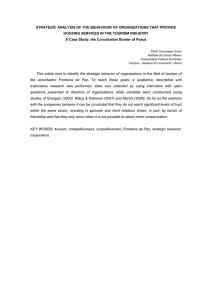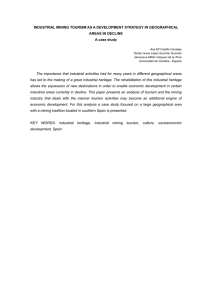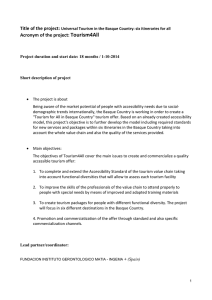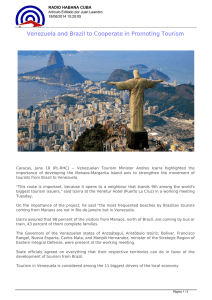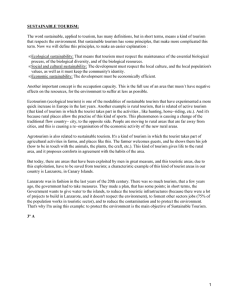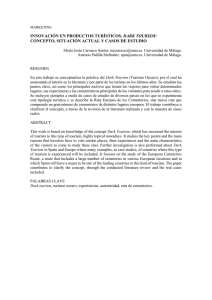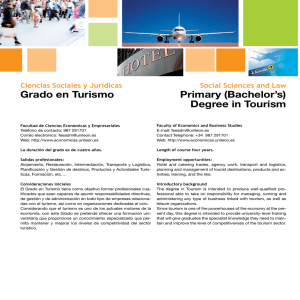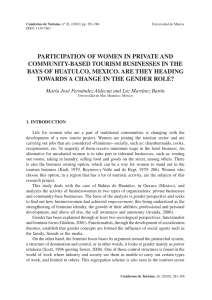the institutional framework of environmental character on andalusian
Anuncio
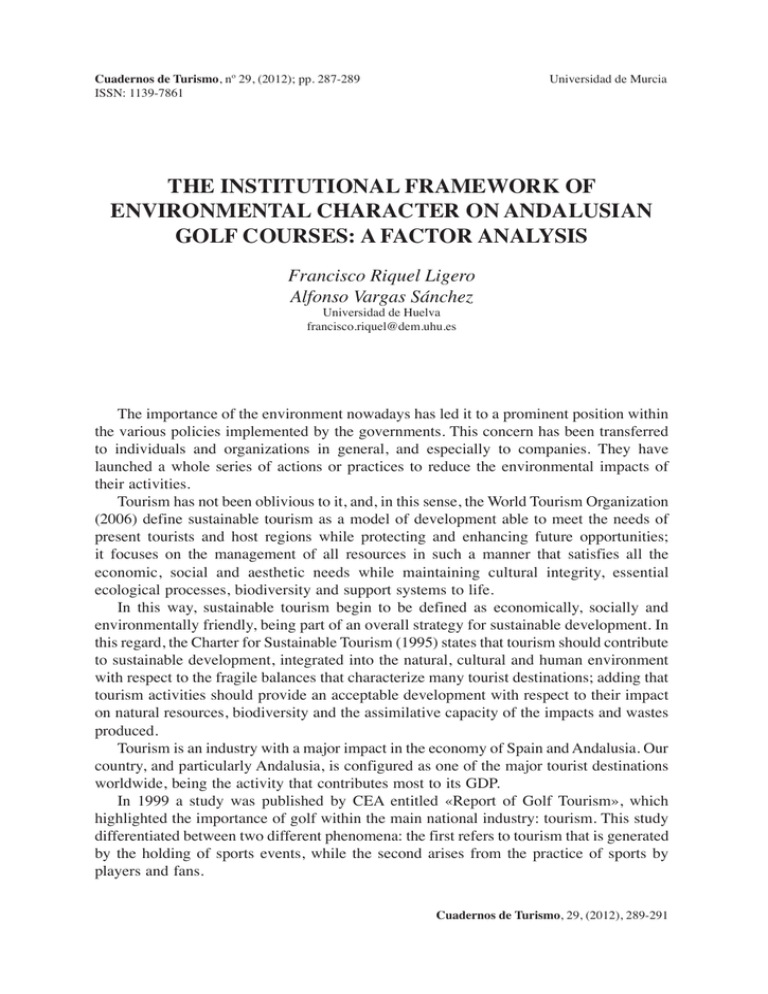
Cuadernos de Turismo, nº 29, (2012); pp. 287-289 ISSN: 1139-7861 Universidad de Murcia THE INSTITUTIONAL FRAMEWORK OF ENVIRONMENTAL CHARACTER ON ANDALUSIAN GOLF COURSES: A FACTOR ANALYSIS Francisco Riquel Ligero Alfonso Vargas Sánchez Universidad de Huelva [email protected] The importance of the environment nowadays has led it to a prominent position within the various policies implemented by the governments. This concern has been transferred to individuals and organizations in general, and especially to companies. They have launched a whole series of actions or practices to reduce the environmental impacts of their activities. Tourism has not been oblivious to it, and, in this sense, the World Tourism Organization (2006) define sustainable tourism as a model of development able to meet the needs of present tourists and host regions while protecting and enhancing future opportunities; it focuses on the management of all resources in such a manner that satisfies all the economic, social and aesthetic needs while maintaining cultural integrity, essential ecological processes, biodiversity and support systems to life. In this way, sustainable tourism begin to be defined as economically, socially and environmentally friendly, being part of an overall strategy for sustainable development. In this regard, the Charter for Sustainable Tourism (1995) states that tourism should contribute to sustainable development, integrated into the natural, cultural and human environment with respect to the fragile balances that characterize many tourist destinations; adding that tourism activities should provide an acceptable development with respect to their impact on natural resources, biodiversity and the assimilative capacity of the impacts and wastes produced. Tourism is an industry with a major impact in the economy of Spain and Andalusia. Our country, and particularly Andalusia, is configured as one of the major tourist destinations worldwide, being the activity that contributes most to its GDP. In 1999 a study was published by CEA entitled «Report of Golf Tourism», which highlighted the importance of golf within the main national industry: tourism. This study differentiated between two different phenomena: the first refers to tourism that is generated by the holding of sports events, while the second arises from the practice of sports by players and fans. Cuadernos de Turismo, 29, (2012), 289-291 288 FRANCISCO RIQUEL LIGERO Y ALFONSO VARGAS SÁNCHEZ Today, Andalusia has become the most important destination for golf tourism in Spain, which has caused, in recent years, an exponential growth of the number of golf courses in this region, usually as part of a complementary offer of tourism and leisure. This reality has led, within the Andalusian society, to an open and broad discussion on the environmental sustainability of these facilities, and therefore the environmental sustainability of golf tourism. The main aim of this paper is the characterization of the particular framework of environmental character in which Andalusian golf courses operate, under the theoretical framework of Institutional Theory and, more specifically, under the approach of the New Institutionalism. Since 1997 this stream of thinking began to have a major application in organizational studies, thanks to the sociologist John W. Meyer, with two articles that lay the foundations for further developments, both published in the American Journal of Sociology: «The Effects of Education as an Institution» and «Institutionalized Organizations: Formal Structure as Myth and Ceremony «, in collaboration with Brian Rowan. This theoretical body would take shape later, as a result of further collaborations with W.R. Scott mainly, another sociologist at Stanford University, USA. According to the literature (Romero, 1995), we can say that it is not until 1985 when this theory captures the attention of a sufficient number of scholars and start to be seen as a scientific discipline. The identification of the coercitive, normative and mimetic mechanisms leading to an isomorphism in business practices can de considered as the main theoretical contribution of this scientific body. To fulfil with our aim, a principal components factor analysis with Varimax rotation has been performed. This analysis checks whether an environment framework exists following the mechanisms proposed by the Institutional Theory, typifying the institutional framework of environmental character for golf courses located in Andalusia. In this line, we have checked whether the indicators in each construct of the institutional context actually load on a single factor, shaping the institutional environment defined by the above mentioned theory. This requires a data matrix from which a correlation matrix was obtained. Through the correlation matrix, calculated with all the independent variables or indicators, the degree of inter-correlations can be found. Among the most important characteristics to be analyzed is the determinant of the correlation matrix. If this parameter is very low, then it means that there are variables with very high inter-correlations, and then it is feasible to continue with the intended factor analysis. However, the determinant must not be zero, since in this case the data would not be valid (Montoya, 2007). As a result of this analysis, we have been able to define and catalogue the institutional framework of environmental character for golf courses in the region under scrutiny. The characteristics of the Andalusian golf courses, that usually are part of a tourist or leisure offer beyond a mere sport, bring as a consequence that they are affected by a large number of rules, both at the municipal, regional or state level. Knowing all the relevant legislation is extremely difficult for managers of these organizations, making really hard that the implementation of environmental plans are guided by the demands of laws only. The entry into force of the Decree 43/2008, dictated by the regional government to regulate the conditions of creation and operation of golf courses in Andalusia, has built Cuadernos de Turismo, 29, (2012), 289-291 EL ENTORNO INSTITUCIONAL DE CARÁCTER MEDIOAMBIENTAL DE LOS CAMPOS DE… 289 a particular coercitive pressure for this type of facility, with a strong environmental component. As it seems obvious, this decree has had a special importance in the formation of a specific and demanding institutional environment. Thus, training and updating efforts in this field became a priority, especially when it comes to avoid possible sanctions. The analysis of the normative construct shows that the moral obligation to respect the natural environment, being in line with social values and consistent with the standards of educational institutions, professional associations and media, is present in the configuration of the construct that includes normative pressures. Finally, mimetic pressures do not offer doubt about its single dimensionality. The analysis of this construct shows us the lack of shared information systems with which to disseminate good environmental management practices, which is a challenge for these organizations when striving for a better competitive position. Cuadernos de Turismo, 29, (2012), 289-291

